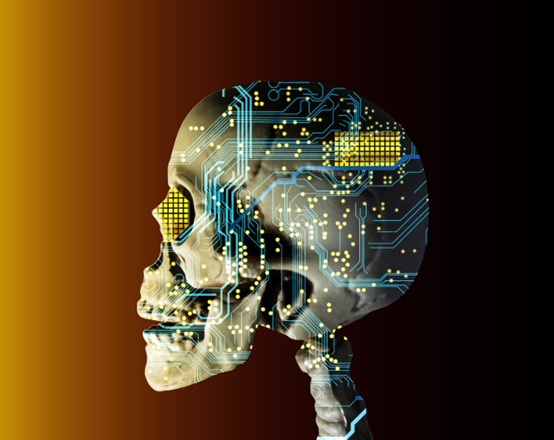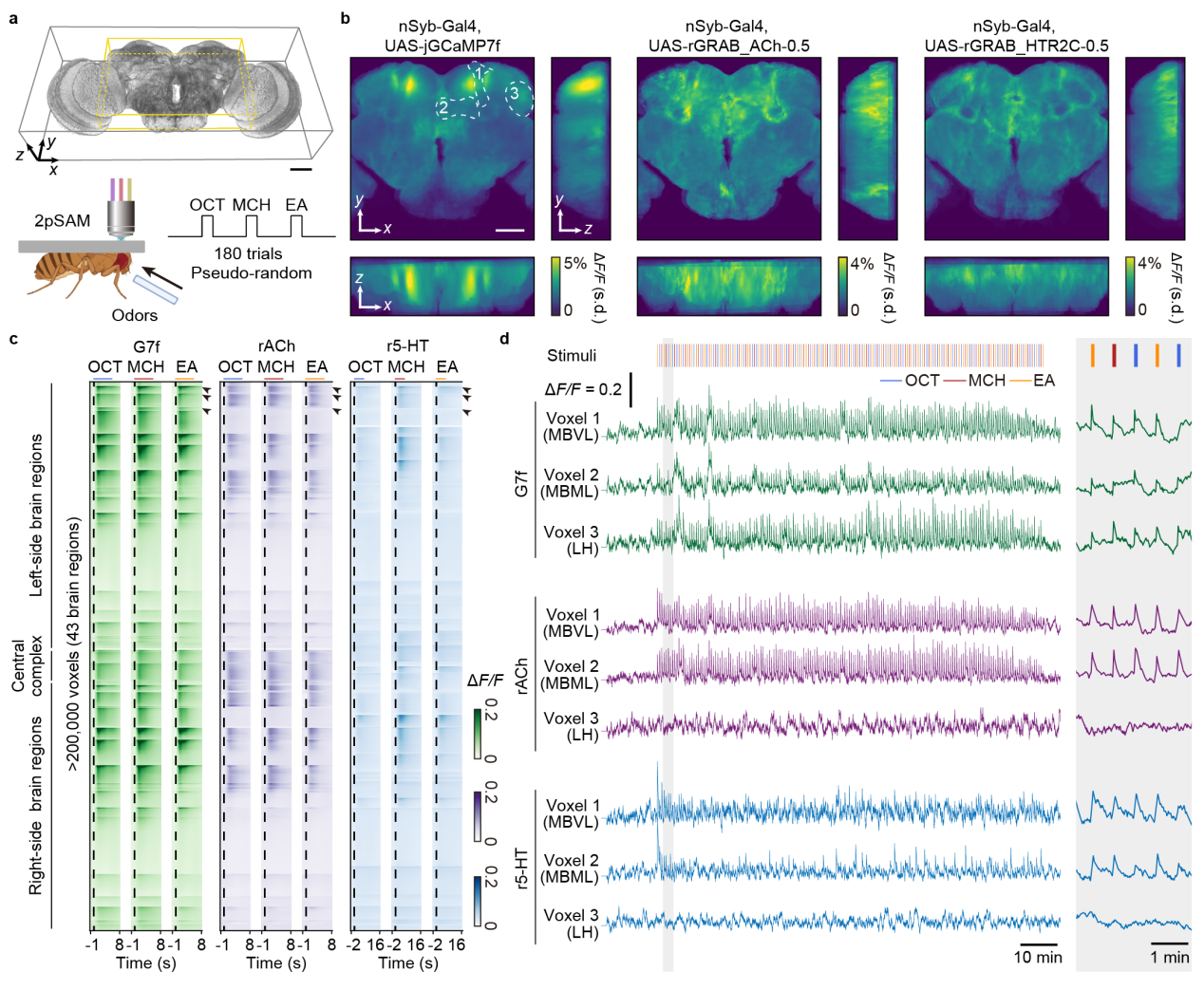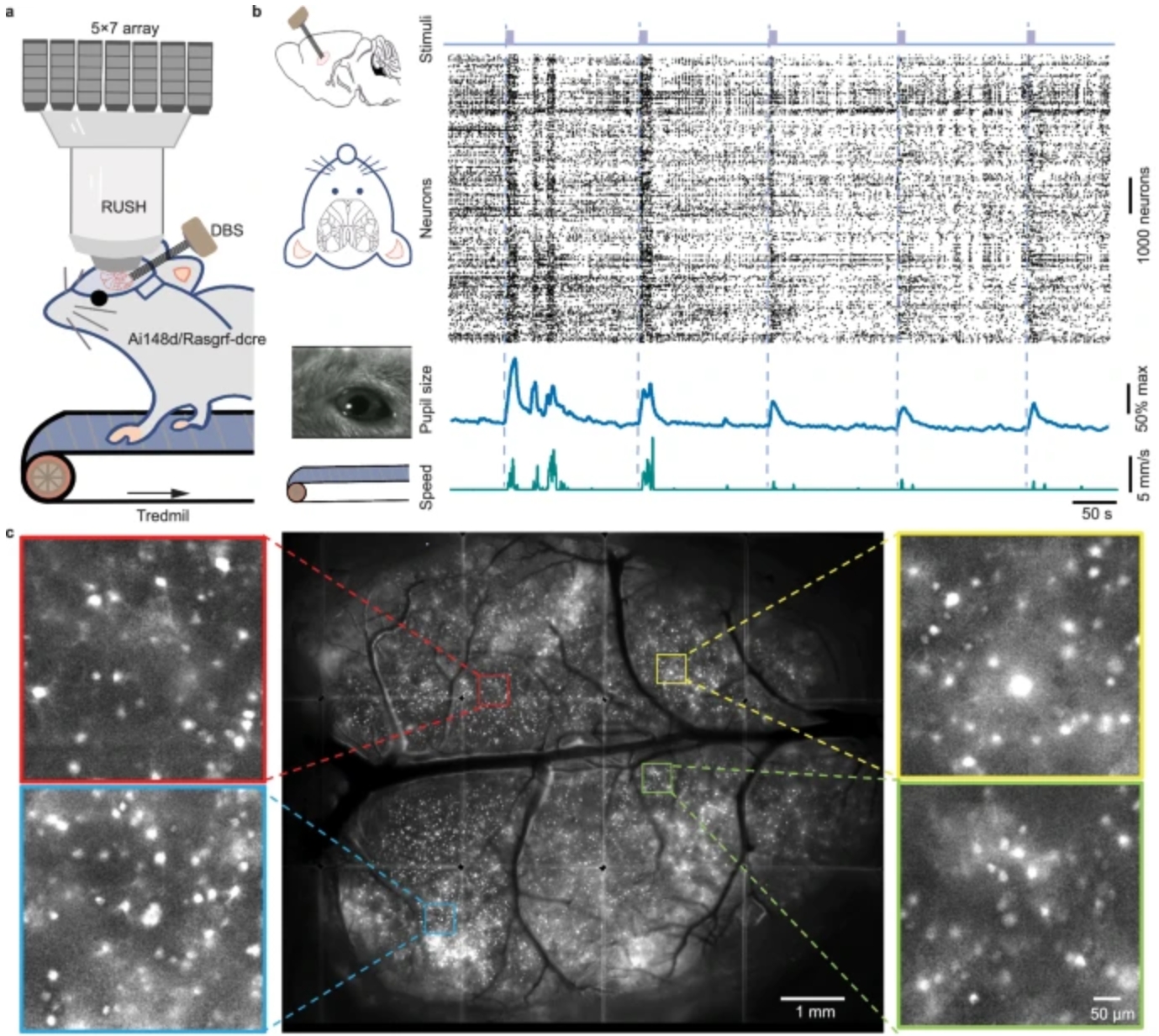

Computational neuroscience offers a perspective of understanding the brain as a data processing system, where the intelligence of biological brain arises from the collective behavior of billions of basic computational units. Unraveling the intricacies of brain function offers insight into the fundamental principles underlying the remarkable ability of general intelligence, both artificial and biological. However, our ability to delve into the deeper layers of the brain is constrained by limitations in both detection capabilities and computational resources. By applying neuronal granular resolution fluorescence microscopy with mesoscale field of view, assisted by computational imaging techniques and neural network modeling, we have made significant strides in elucidating the collective behavior of the neural network. These techniques have enabled us to explore how the brain encodes and processes high-dimensional information, dynamically adapts to changing biological states, and evolves through learning from life experience. By delving into the computational mechanisms of the brain, we pave the way for enhanced self-understanding and the development of human-like artificial intelligence.
Representative publications
Mesoscale neuronal granular trial variability in vivo illustrated by nonlinear recurrent network in silico, Nature Communications 2024
Prominent involvement of acetylcholine dynamics in stable olfactory representation across the Drosophila brain, Nature Communications 2025

